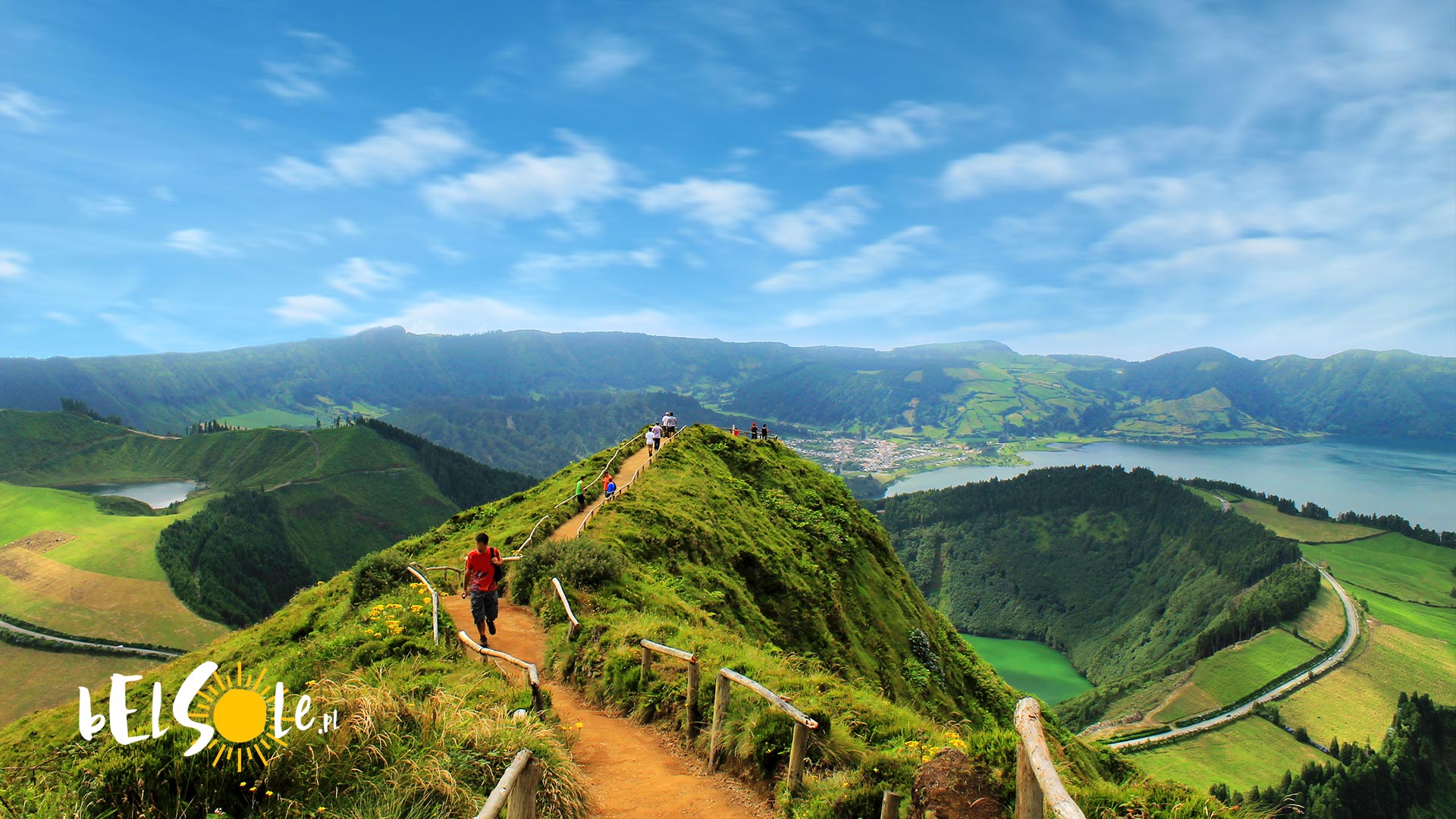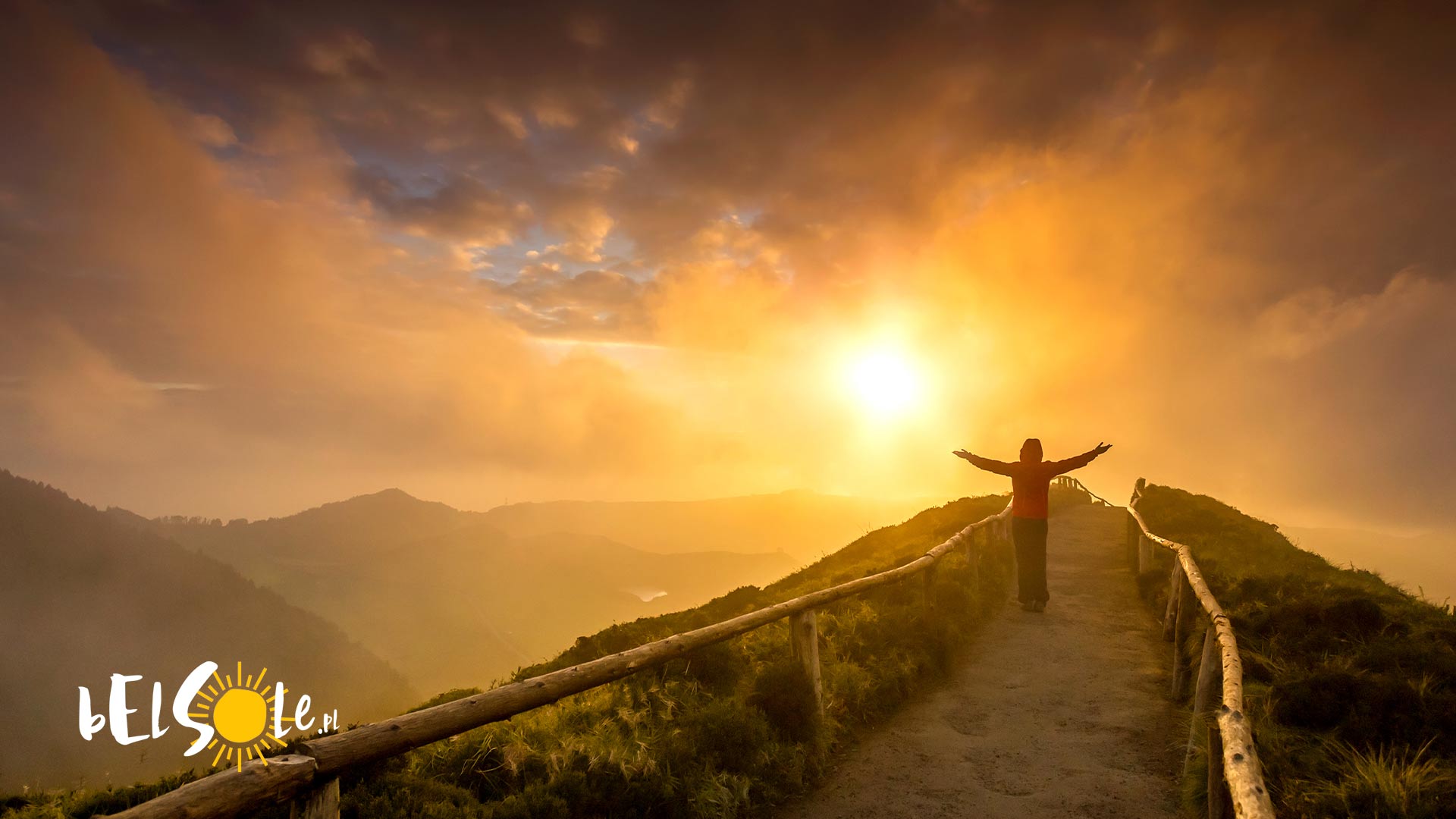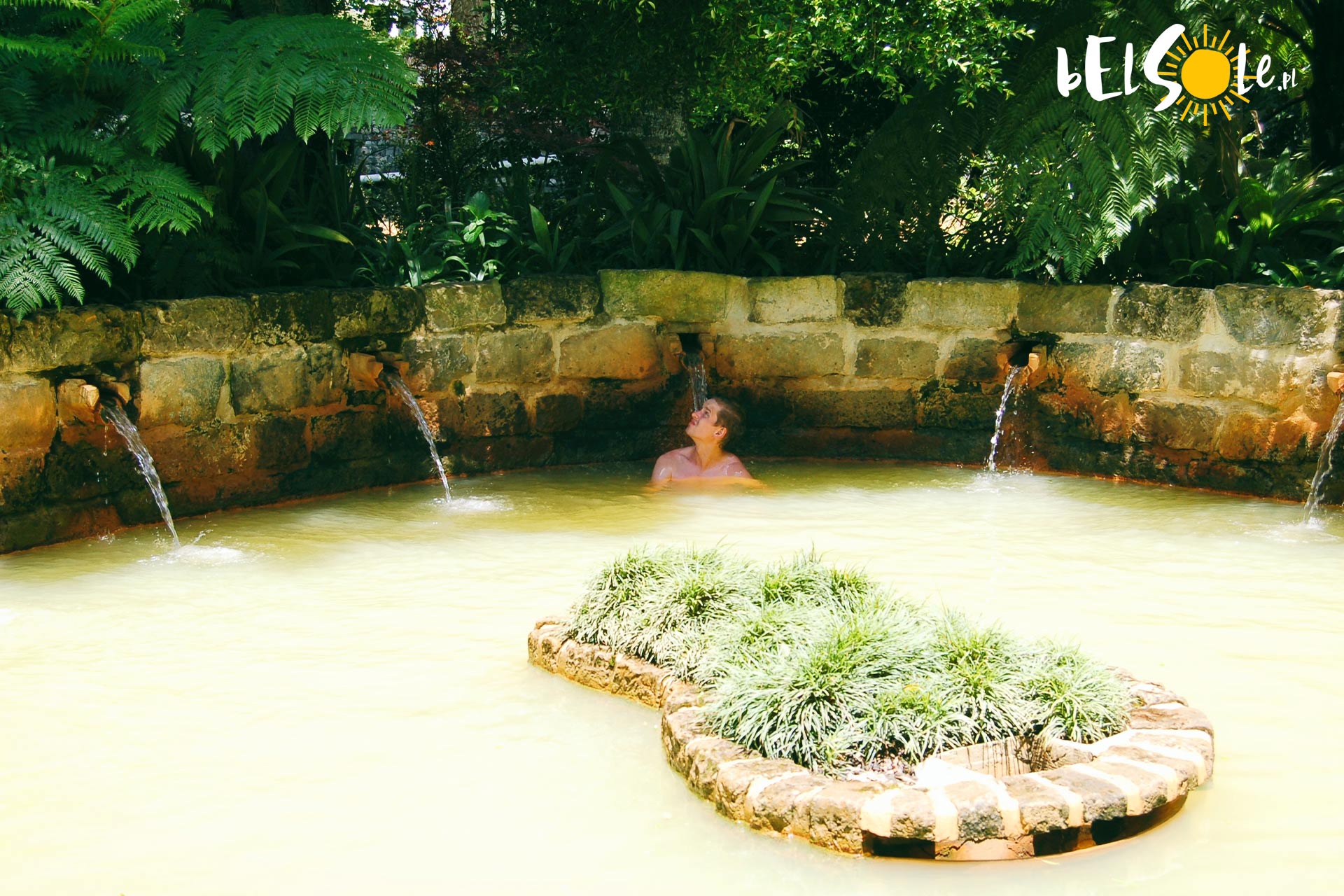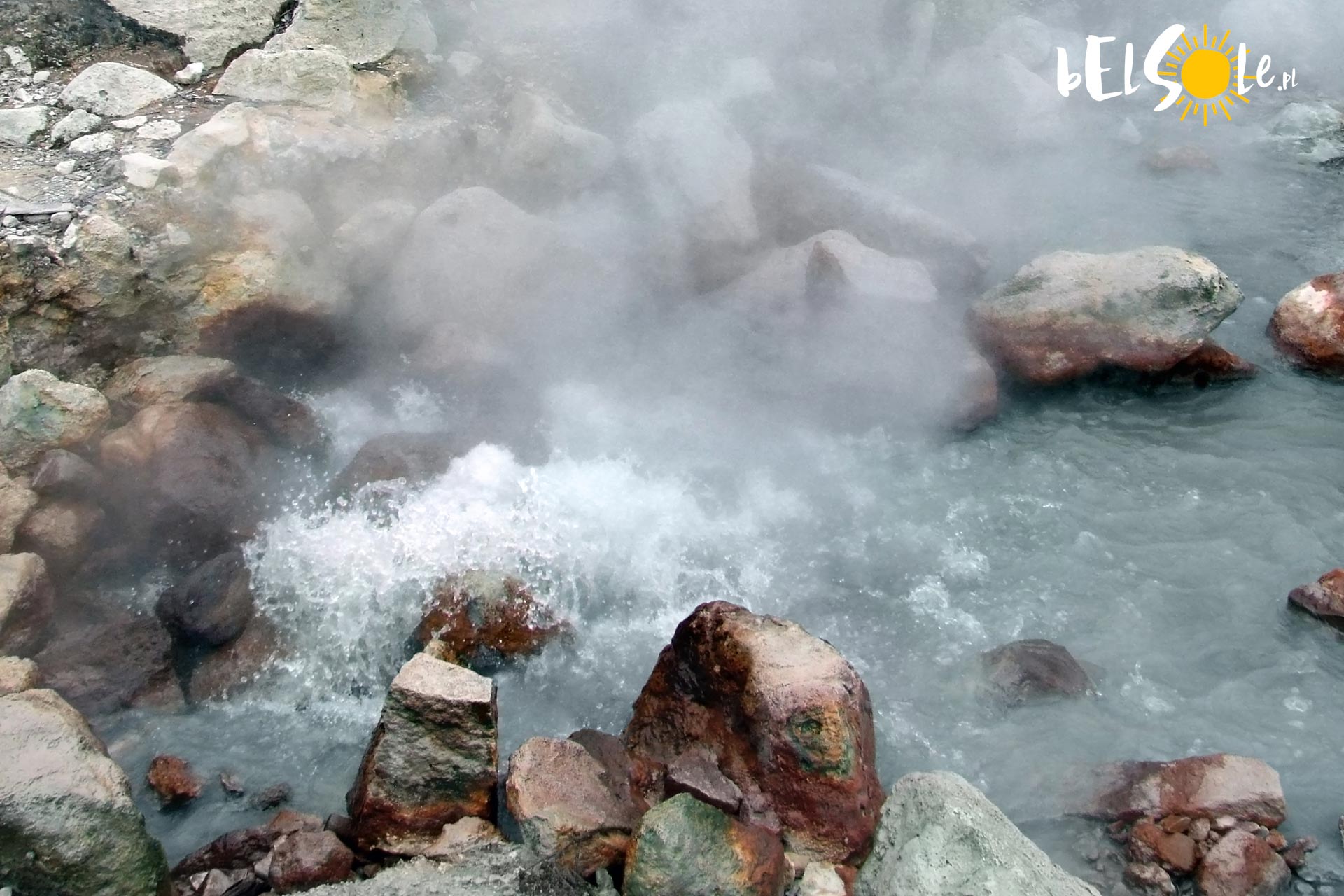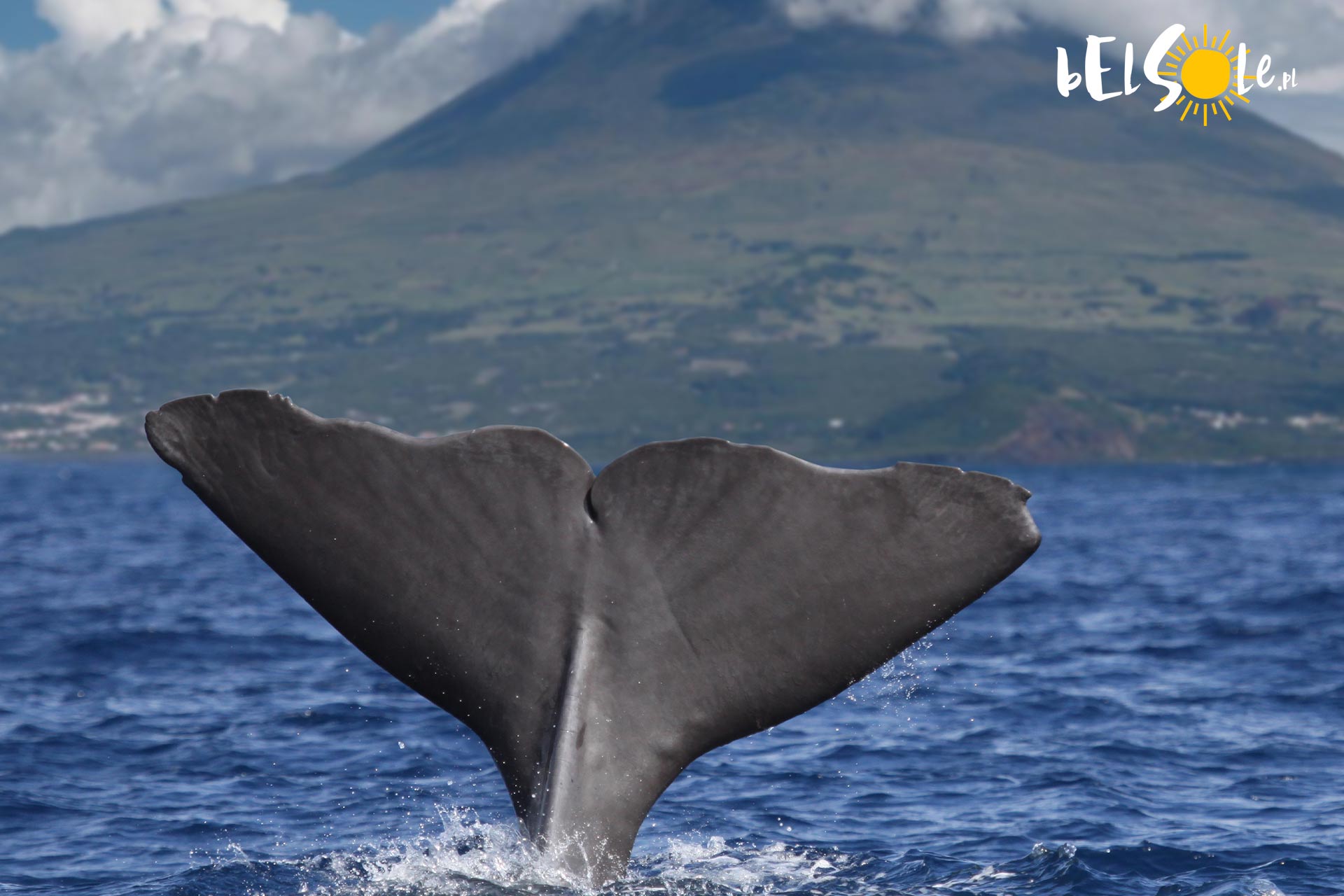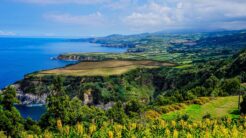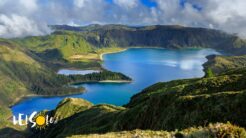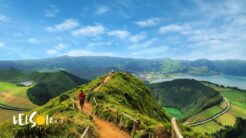Many people call the Azores the “Hawaii of Europe” – it’s humid, rainy and incredibly green. It’s a place to unwind and admire the beautiful scenes nature prepares sometimes. Given that it’s a whole archipelago, you may not know where to start. What to see in the Azores? We’ll go over exactly that in today’s post.
The Azores
What to see in the Azores?
The Azores are formally a part of Portugal, though they don’t necessarily resemble mainland Portugal much – there’s much more untamed nature, forests, hiking paths and generally more of a focus on nature than on culture. It’s a great place for those of you who appreciate fresh air, nature and beautiful views.
You can fly to the Azores from Porto, Lisbon or London with low-cost airlines or with tourist offices and charters. The airport is located in Ponta Delgada. You can hop between the islands by Atlantico Line ferries, which aren’t too expensive, or by plane. There are also a few transport options on the islands themselves, like car hires (recommended!), infrequent buses or taxis – remember to negotiate the fee before taking the taxi.
Poça da Dona Beija
Hot springs in the Azores
Though there are many hot springs in the Azores, Poça da Dona Beija is particularly clean, well-maintained and greatly integrated into nature. Guests can enjoy 5 pools, each with a different water temperature. The coolest one is 28°C, the hottest 39°C. The temperature is regulated by mixing cold spring water with naturally hot water. The water is rich in iron, making bathing not only relaxing, but also healthy.
The complex is located at Lomba Das Barracas 1 in Furnas and is open daily from 10am to 11pm. The springs have an admission fee of €6 for adults and €4 for children.
Ponta da Ferraria
More hot springs, but this time in the Ocean
Ferraria is the westernmost part of Saõ Miguel. This unique natural pool is fed by water from the ocean. Why is it hot then? Because the Azores are still, in the end, volcanic islands, and volcanoes can still remain active underground. Hence why this pool still remains very hot, though don’t worry, as the local authorities have installed several safety features to make it comfortable and safe to use. You can descend to the pool by a metal ladder, though there are also ropes installed around the pool. During high tides, the waves invade the pool ruthlessly, hence why the ropes and ladders are needed for when it gets a bit scary. Be sure to check the tides before you visit Ponta da Ferraria.
Sete Cidades
Mountainside in the Azores
Sete Cidades is effectively a massive volcano crater located in the west of the island. You can see three beautiful lakes located in the craters from the Miradouro da Boca do Inferno viewpoint: Lagoa Azul with blue water, Lagoa Verde with green water, and the less spectacular Lagoa de Santiago lake. The path to the viewpoint follows the crest of the hill.
As for safety, there are wooden handrails on both sides of the path. An absolutely stunning panorama is guaranteed if you can find a fogless day. Alternatively, you can descend to the bottom of the crater, hire a kayak and enjoy the views in silence from water level.
You can reach the crater by car from Ribeira Grande. The route takes about 40 minutes.
Portas da Cidade
The city gates of Ponta Delgada
Portas da Cidade are the city gates from the 18th century located in the Goncalo Velho Cabral square. They were previously situated in the old harbour, but have since been relocated. The gates consist of three arches with a coat of arms in the middle of the largest one. Like the rest of the city, it has a unique black and white façade like the rest of the city centre.
Obligatory seeing of whales
Whale watching in the Azores
The fortunate location of the islands means that you can totally see whales roaming the Atlantic here. The best time to go on a whale watching cruise is between the beginning of April and the end of May, as that’s when most whales are spotted. In addition to whales, you can also watch herds of dolphins, perhaps even sharks or orcas ala Mallorca.
It’s worth noting that, until recently, it was legal to hunt whales in the Azores. There has since been an official ban on whaling, in 1982, even though whalers killed their last whale in 1987. Those who have read or watched Moby Dick will know what hunting them down was like, so it’s quite preferable that that tradition is dead and gone.
Whale-watching cruises on Saõ Miguel mainly operate from Ponta Delgada, but you will also find several companies in Vila Franca do Campo. The cost of such a cruise is around €55-60.
Pineapple plantations
Arruda plantations
You’ll also find pineapple plantations in the Azores, mainly the famous Arruda plantation. It was established on top of an old orange farm by Dr Augusto Arruda in the 20th century. It’s open daily from April to September, 9am to 8pm, and from October to March, 9am to 6pm. The plantations are located at Rua Dr. Augusto Arruda 9500-454 – Fajã de Baixo. You can also purchase various pineapple products on site.
Tea fields
Tea in the Azores
The Azores is the only place in Europe where tea is grown. Where did it come from? There used to be orange groves growing here, though a plague caused all the trees to die. As the King of Portugal received tea seeds from the Emperor of China, he decided to use them and try to revitalise these fields. After much struggle, the trees began to grow.
Today, one of the most beautiful trails on Saõ Miguel leads through the tea plantations. The path leads among asymmetrically planted green bushes. At the end, there is a whole tea factory which is free to visit. Inside, you will learn about the entire tea production process and have the opportunity to do some shopping. Today, of the 14 once thriving companies, two remain on the island: Cha Gorreana and Porto Formoso.
See also:


